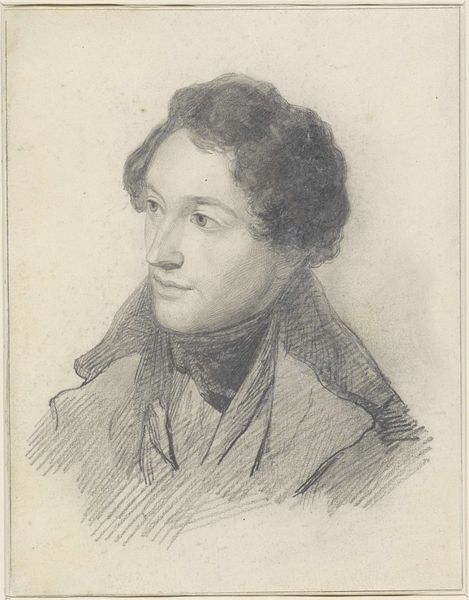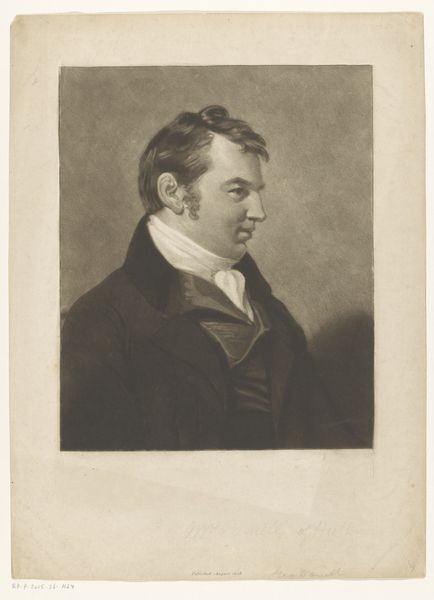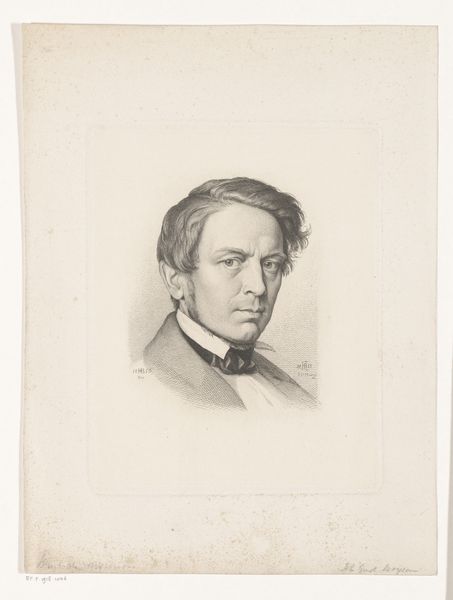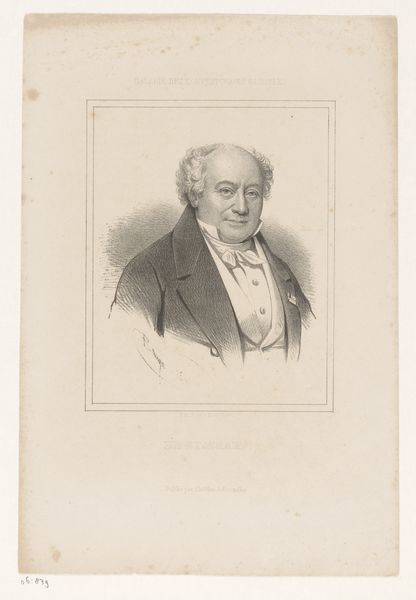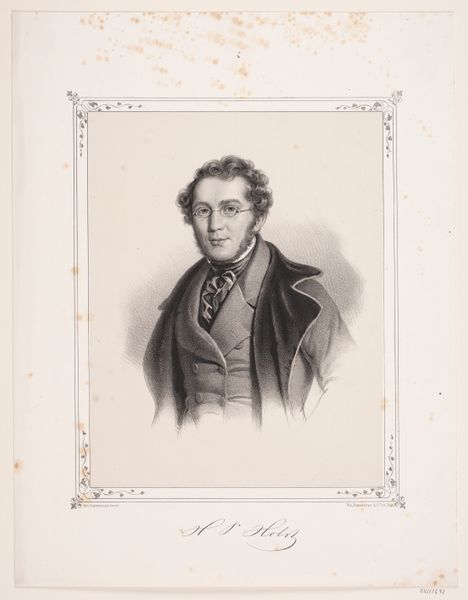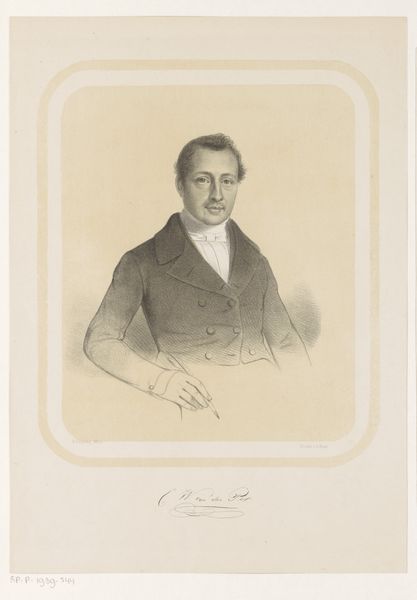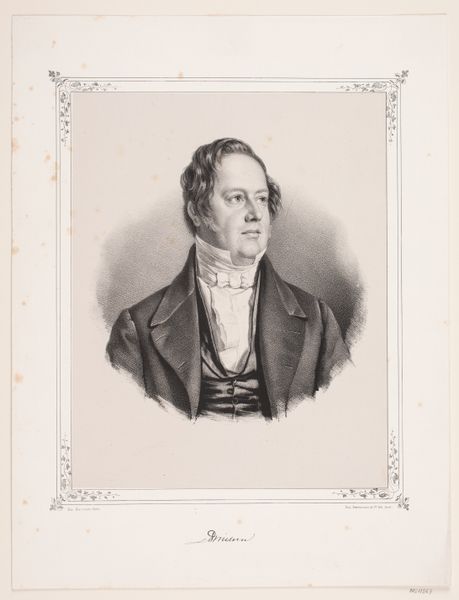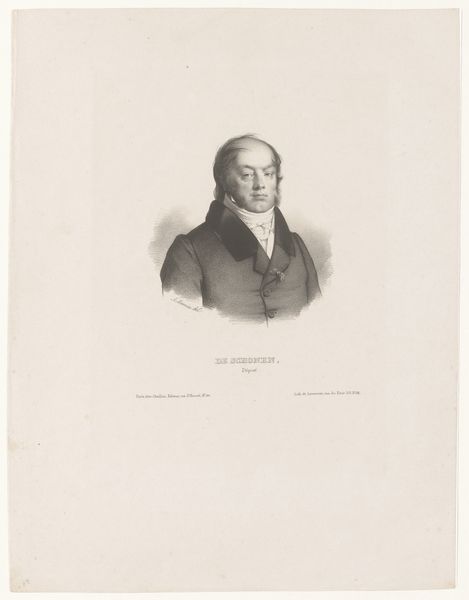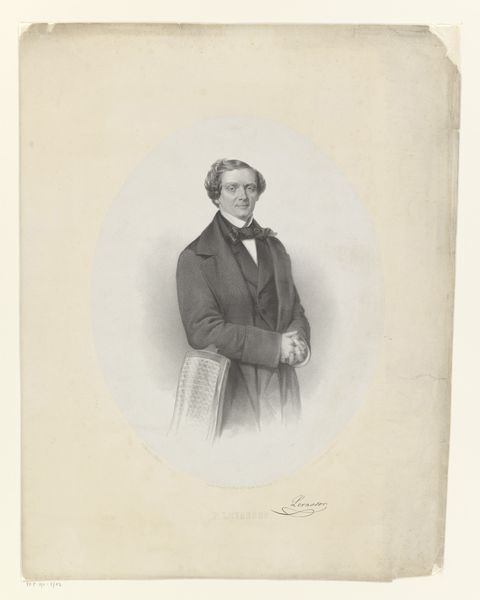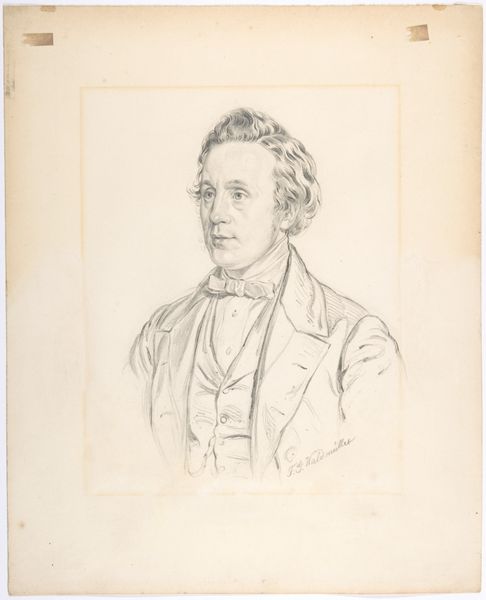
print, engraving
#
portrait
# print
#
engraving
#
realism
#
monochrome
Dimensions: height 174 mm, width 108 mm
Copyright: Rijks Museum: Open Domain
Curator: Looking at this engraving by Moritz Steinla, made sometime between 1815 and 1858, currently held here at the Rijksmuseum, what strikes you first? Editor: Well, there’s a somberness to the profile, a kind of serious intent conveyed through the precise lines, although the execution appears somewhat…stiff? Curator: That perceived stiffness speaks to the meticulous process of engraving. Each line had to be carefully incised into the metal plate, a very laborious, specialized task that was very class-specific, often overlooked. The materials themselves - the metal plate, the paper, the ink – and the act of reproducing this portrait in multiple prints… these choices all determined how the subject was viewed by the 19th century public. Editor: Right, the social circulation of images, the dissemination of bourgeois ideals. This Karl August Föster—was he part of the rising middle class? His gaze certainly carries an air of confident self-fashioning. The detail in the face seems idealized, but what do we know about Föster's life and his place within a rapidly changing socio-economic order at the time? Curator: Primary sources show Föster had roots in mining and technology in his native Germany, sectors tied very closely to metalwork; I wonder how those roots play out, conceptually speaking, in viewing a portrait reproduced via engraving. Also: who was commissioned for making of this print and was Föster even aware of its creation or wider circulation? Editor: It's fascinating to consider the power dynamics at play—who had the authority to depict whom, and for what purposes? These printed images were commodities themselves. This single monochrome engraving raises many questions about visibility and representation during that historical period. It encourages an interrogation of representation itself: about identity and its constant construction within certain socioeconomic bounds. Curator: Absolutely, the layers of process from the artist's hand to the printer's press add complexity to this seemingly straightforward portrait, even today as we assess it as something from the distant past that now bears our scrutiny. Editor: Exactly! And hopefully it sparks more conversations about power, visibility, and the often-overlooked labor behind even the most seemingly simple images.
Comments
No comments
Be the first to comment and join the conversation on the ultimate creative platform.

